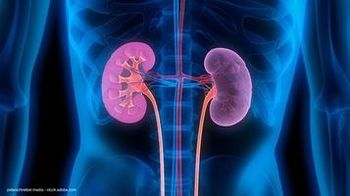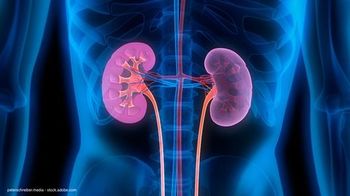
Pivotal data for lumasiran in PH1 published in NEJM
The ILLUMINATE-A trial of lumasiran in patients with primary hyperoxaluria type 1 supported the FDA approval of this drug.
Findings from the pivotal phase 3 ILLUMINATE-A trial of lumasiran (Oxlumo) in patients with primary hyperoxaluria type 1 (PH1) have now been published in the New England Journal of Medicine (NEJM).1,2
ILLUMINATE-A was one of two trials that supported the November 2020 FDA approval of lumasiran as the first drug for the treatment of patients with PH1.3 The drug is approved for both adult and pediatric patients.
“PH1 often presents in early life, with kidney stones, nephrocalcinosis, renal failure and, in advanced stages, systemic spread of oxalate throughout the body with life-threatening consequences. Oxalate drives disease manifestations and progression, and is the toxic mediator of end-organ damage in PH1,” Yaacov Frishberg, MD, head of the Division of Pediatric Nephrology, Shaare Zedek Medical Center, Jerusalem, Israel, and lead co-author on ILLUMINATE-A, stated in a press release.
“We believe the publication of the ILLUMINATE-A Phase 3 study results in the NEJM is a testament to lumasiran as an oxalate-lowering therapy which is expected to confer significant clinical benefit to children and adults living with this disease,” added Frishberg.
The phase 3 open-label ILLUMINATE-A trial (NCT03681184) included 39 patients aged ≥6 years with PH1. Overall, 26 patients were randomized to lumasiran and 13 were randomized to placebo.
Patient characteristics were considered by the investigators to be generally well balanced between the 2 study arms. At baseline, the median age across all patients was 14 years (range, 6-60), 85% of patients had a history of kidney-stone events, and 54% of patients had a history of nephrocalcinosis.
In the treatment arm, patients received subcutaneous lumasiran monthly for 3 months followed by quarterly maintenance doses at 3 mg/kg. The primary outcome measure was the percent change in 24-hour urinary oxalate excretion from baseline to month 6.
“We found that the percentage reduction in 24-hour urinary oxalate excretion was 53.5 percentage points greater with lumasiran than with placebo during the 6-month double-blind treatment period and that most patients who received lumasiran had normal or near-normal urinary oxalate levels at month 6,” the authors wrote in their NEJM manuscript.
Among patients in the lumasiran arm, there was a 65.4% average reduction of oxalate in the urine compared with an average reduction of 11.8% in the placebo arm. Over half (52%) of patients receiving lumasiran achieved a normal 24-hour urinary oxalate level at 6 months, compared with no patients in the placebo group. Eighty-four percent of patients in the lumasiran arm reached normal or near-normal urinary oxalate levels versus no patients in the placebo arm.
Regarding safety, the investigators determined that lumasiran was safe and tolerable. No severe or serious adverse events (AEs) were reported and there were no patient deaths. All AEs were mild to moderate. The most common AE with lumasiran was injection site reaction, which occurred in 38% of patients.
References
1. Alnylam Announces Publication of ILLUMINATE-A Phase 3 Study Results for Lumasiran in The New England Journal of Medicine. Published online March 31, 2021. Accessed April 1, 2021. https://bit.ly/3wdZNh7.
2. Garrelfs SF, Frishberg Y, Hulton SA, et al. Lumasiran, an RNAi therapeutic for primary hyperoxaluria type 1. N Engl J Med. 2021;384(13):1216-1226. doi: 10.1056/NEJMoa2021712
3. FDA Approves First Drug to Treat Rare Metabolic Disorder. Published online November 23, 2020. https://www.fda.gov/news-events/press-announcements/fda-approves-first-drug-treat-rare-metabolic-disorder. Accessed April 1, 2020.
Newsletter
Stay current with the latest urology news and practice-changing insights — sign up now for the essential updates every urologist needs.

















